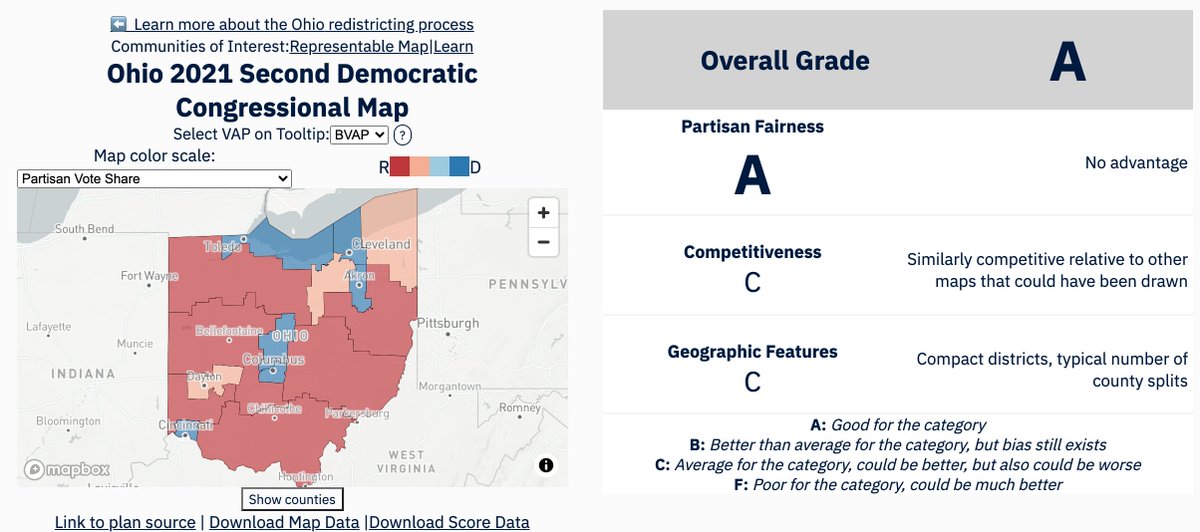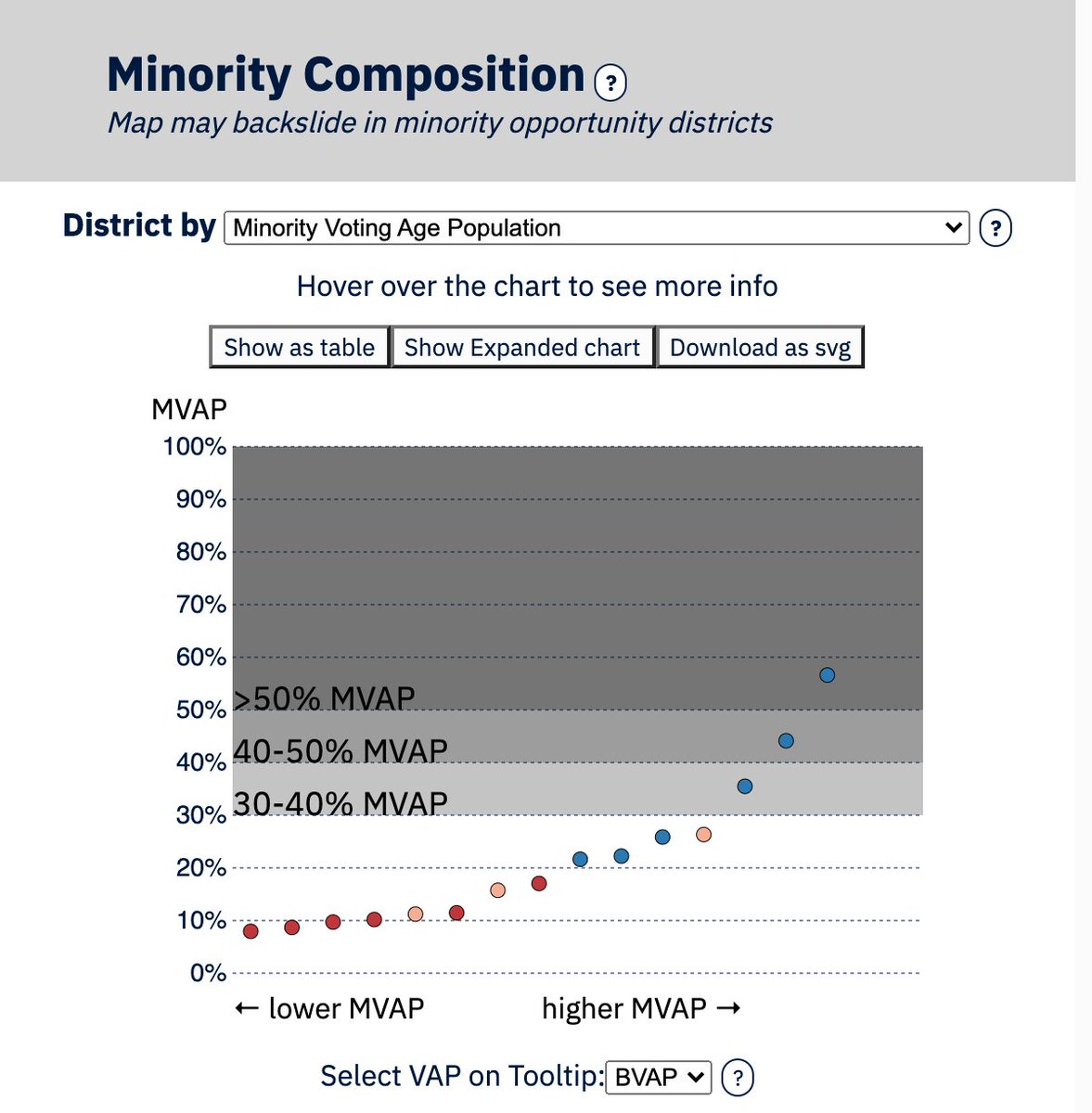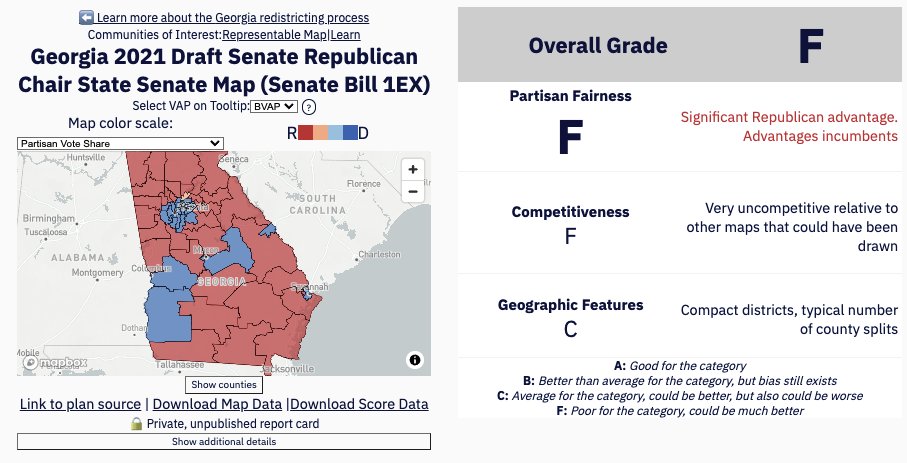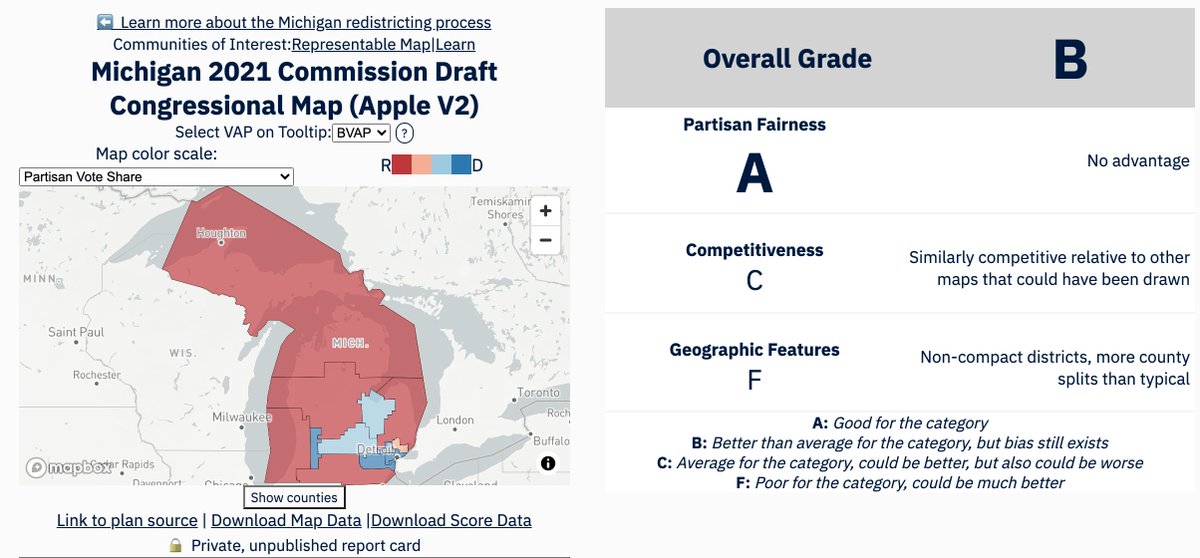With the Georgia special session on redistricting starting today, we have Report Cards out for the Republican state house and state senate maps, which were released last night.
#PGP_GA #GAPol #Redistricting #FairMaps
#PGP_GA #GAPol #Redistricting #FairMaps

The State House Map gets a B overall and in Partisan Fairness, an F in Competitiveness and a C in Geography.
We'd expect it to elect 98R and 82D, compared to the current map, which elects 101R and 77D (with one vacancy).
gerrymander.princeton.edu/redistricting-…
We'd expect it to elect 98R and 82D, compared to the current map, which elects 101R and 77D (with one vacancy).
gerrymander.princeton.edu/redistricting-…

It has 9 competitive seats.
It has 45 seats where Black Georgians make up a majority, 1 where Hispanic Georgians are a majority, and 1 where Asian Georgians make up just under 40% of the population.
It has 45 seats where Black Georgians make up a majority, 1 where Hispanic Georgians are a majority, and 1 where Asian Georgians make up just under 40% of the population.

The State Senate proposal gets an F overall, in Partisan Fairness, and in Competitiveness, with a C in Geography.
It would elect 33R and 23 D; the current map is 34 R and 22 D.
gerrymander.princeton.edu/redistricting-…
It would elect 33R and 23 D; the current map is 34 R and 22 D.
gerrymander.princeton.edu/redistricting-…

It has 1 competitive seat, 13 where the BVAP is over 50%, and 1 where the HVAP is over 40%.
It has also a hallmark of gerrymandering - a sudden jump in D vote share in the partisan composition chart.
It has also a hallmark of gerrymandering - a sudden jump in D vote share in the partisan composition chart.

This compares to the Report Cards we issued for the Democratic proposed maps:
House (B-B-F-C):
gerrymander.princeton.edu/redistricting-…
Senate (A-A-C-C): gerrymander.princeton.edu/redistricting-…
House (B-B-F-C):
gerrymander.princeton.edu/redistricting-…
Senate (A-A-C-C): gerrymander.princeton.edu/redistricting-…
The parties will also be debating the Congressional maps this week.
The Democratic Proposal (B-B-C-C): gerrymander.princeton.edu/redistricting-…
The Republican Proposal (C-C-C-C): gerrymander.princeton.edu/redistricting-…
The Democratic Proposal (B-B-C-C): gerrymander.princeton.edu/redistricting-…
The Republican Proposal (C-C-C-C): gerrymander.princeton.edu/redistricting-…

We got the numbers of the current Georgia State House wrong! We apologize - the current composition is 103R and 76D and one vacancy! Our apologies!
• • •
Missing some Tweet in this thread? You can try to
force a refresh




















